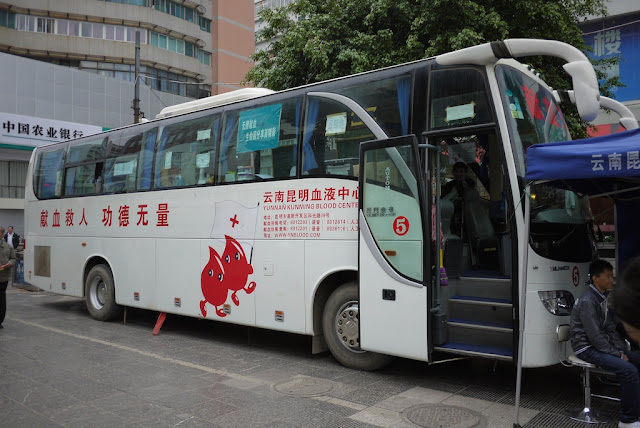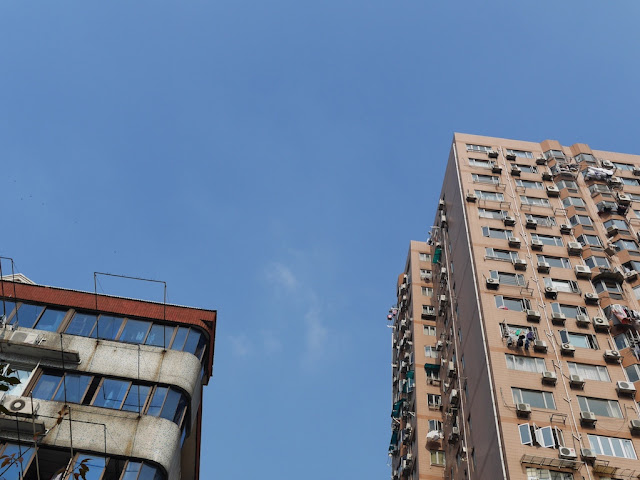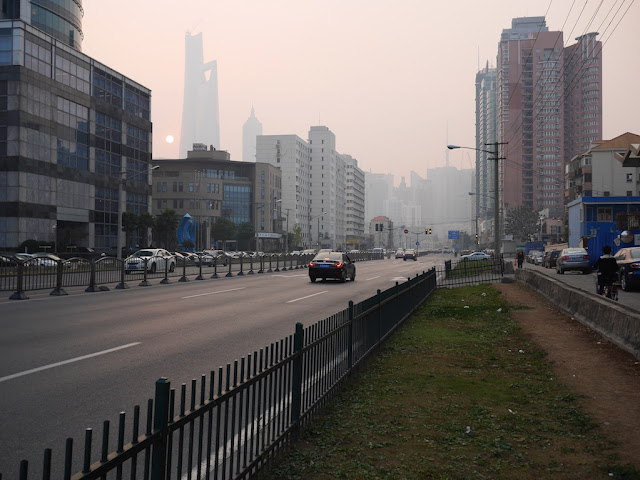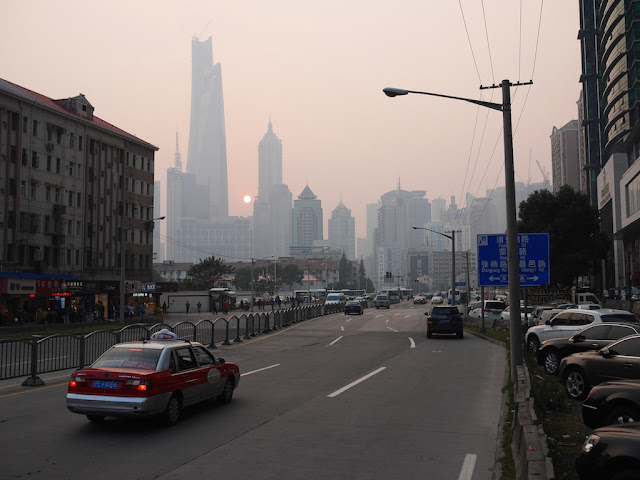How can more people be encouraged to donate blood?
In many Chinese cities, I have seen mobile blood donation centers in buses, often parked near shopping areas, parks, or public squares. For example, here is one I saw several years ago in Kunming, Yunnan:
Increasing blood donation's visibility and making it more convenient seem like reasonable strategies. But is there something that can be done to improve the buses? In Shanghai, some thought adding a Hello Kitty theme might be an answer.
I saw the Hello Kitty blood donation bus in operation between the Shanghai Railway Station and the Shanghai Long-Distance Bus Station. It first appeared this summer, and Kotaku has a collection of photos of its interior.
I would be curious to see a study comparing the effectiveness of the Hello Kitty bus versus more typical blood donation buses in different locations. Perhaps a train station isn't where this particular bus could have the largest impact. Whatever the case, it's an interesting tactic to consider and a change of pace from walking blood droplets.
In many Chinese cities, I have seen mobile blood donation centers in buses, often parked near shopping areas, parks, or public squares. For example, here is one I saw several years ago in Kunming, Yunnan:
Increasing blood donation's visibility and making it more convenient seem like reasonable strategies. But is there something that can be done to improve the buses? In Shanghai, some thought adding a Hello Kitty theme might be an answer.
I saw the Hello Kitty blood donation bus in operation between the Shanghai Railway Station and the Shanghai Long-Distance Bus Station. It first appeared this summer, and Kotaku has a collection of photos of its interior.
I would be curious to see a study comparing the effectiveness of the Hello Kitty bus versus more typical blood donation buses in different locations. Perhaps a train station isn't where this particular bus could have the largest impact. Whatever the case, it's an interesting tactic to consider and a change of pace from walking blood droplets.



















